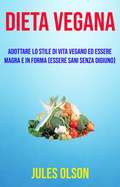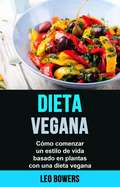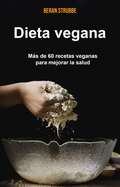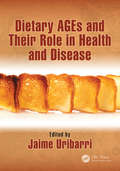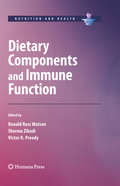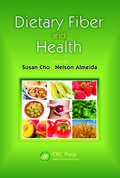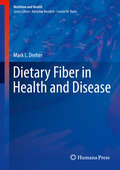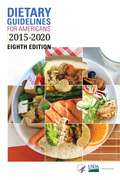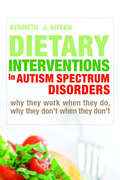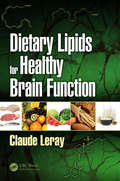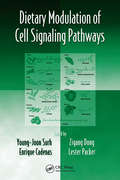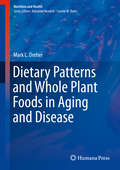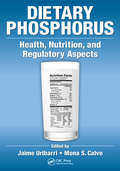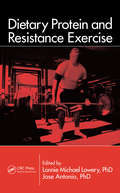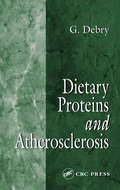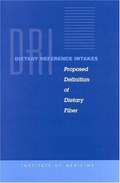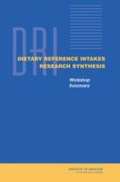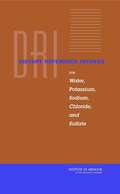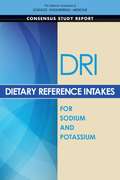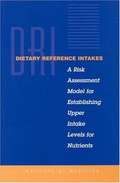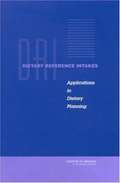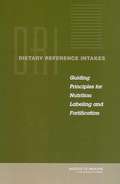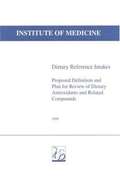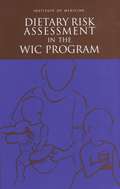- Table View
- List View
Dieta vegana: adottare lo stile di vita vegano ed essere magra e in forma (essere sani senza digiuno)
by Jules OlsonAdottare una dieta vegana sana può essere una sfida. Sarai ancora in grado di goderti tutti i tuoi cibi preferiti? Quando elimini carne, latticini e prodotti animali dalla tua dieta, ottieni ancora tutti i tuoi nutrienti essenziali? Come superare le comuni sfide che molte persone incontrano nell'adattarsi a una dieta a base vegetale. Se vuoi provare a mangiare meno carne o addirittura eliminarla del tutto, è importante educare te stesso prima di lanciarti all'avventura. Potresti ancora avere alcune false credenze su una dieta a base vegetale, non essere sicuro di certi aspetti dell'essere vegani o non sapere cosa rispondere quando un collega non vegano ti sfida con la tua scelta di vita. Ho citato questi falsi miti perché stavo cercando risposte soddisfacenti quando ho deciso di diventare vegano. La transizione può essere fonte di confusione e talvolta estenuante. Ecco quindi l'educazione è la chiave. Questo libro è per tutti coloro che vogliono alcune risposte alle domande più comuni sull'essere vegani. Clicca sul link in cima alla pagina e non lasciarti sfuggire la tua copia!
Dieta vegana: cómo comenzar un estilo de vida basado en plantas con una dieta vegana
by Leo BowersSe podría pensar que comer menos carne, no consumirla o renunciar a los productos lácteos, incluyendo más verduras en sus comidas, significa resignarse a una dieta blanda y aburrida, pero este no es el caso si recurre a la comida mexicana. Personalmente, me encanta comer la comida mexicana, no solo por sus colores y excelentes sabores, sino también por el hecho de que es muy fácil poder sustituirla por opciones a base de plantas. Mi amor por la cocina mexicana me impulsaría a encontrar opciones veganas, y al mismo tiempo satisfacer ese sabor mexicano. En este libro aprenderás cómo comenzar una dieta vegana siguiendo el plan para principiantes de dieta vegana de 14 días. Descubrirás cómo funciona el estilo de vida vegano y cuáles son sus beneficios. Aprenderás a cocinar deliciosas y nutritivas comidas veganas en el desayuno, almuerzo, cena e incluso en el postre y con gran contenido en proteínas, vitaminas y baja en colesterol. Este libro fue escrito para aquellos que desean mejorar su salud en general, eligiendo comer frutas, verduras, nueces, semillas y legumbres en lugar de carnes las cuales ocasionan cáncer. También es para aquellos que desean ayudar al medio ambiente y dejar de participar en la cruel industria de la cría de animales.
Dieta vegana: más de 60 recetas veganas para mejorar la salud
by Beran StrubbeA medida que envejece cada año, le resultará difícil ocultar todos los signos visibles de que está envejeciendo. Una de las señales más obvias de que has pasado de ser un adolescente a un adulto mayor es tu ralentización del metabolismo. A pesar de que la cantidad de comida que está comiendo es la misma que cuando era unos años más joven, esa hinchazón en la sección media simplemente no desaparecerá. A veces, comer menos tampoco ayuda y ni siquiera es más saludable. ¿Estás planeando cambiarte a una dieta vegana? Esto es lo que necesitas saber antes de realizar el cambio. ¡En el Plan de dieta vegana, hemos tratado de cubrir la información básica que debe tener en cuenta antes de subirse al carro de la alimentación sin carne, ni huevos, ni lácteos y tampoco miel! Cocinar con sus hijos a veces puede ser una experiencia tediosa. Especialmente cuando tratas de seguir una dieta vegana, pero este libro lo ayudará al proporcionar recetas simples, rápidas y divertidas que usted y sus hijos disfrutarán haciendo juntos una y otra vez. No solo pasarás tiempo de calidad con tu pequeño, sino que también les enseñarás hábitos alimenticios saludables.
Dietary AGEs and Their Role in Health and Disease
by Jaime UribarriOf the many dietary factors associated with inflammation and oxidative stress, a specific group are food-derived pro-inflammatory and pro-oxidant compounds, so-called advanced glycation end products (AGEs). While AGEs have been recognized as factors in the pathogenesis of diabetic complications, the importance of AGEs of dietary origin as a factor in human disease is of more recent concern. This book presents data from the past two decades on the role of AGEs in causing chronic disease. It starts by defining the compounds passing through all the clinical diseases that have been associated with them and finishes by offering different therapeutic options to deal with the problem.
Dietary Components and Immune Function
by Victor R. Preedy Ronald Ross Watson Sherma ZibadiDietary Components and Immune Function focuses on immune modulation, immune mediated disease resistance, immune changes due to AIDS, immune modulated cancer therapy, and autoimmune diseases as modified by dietary supplement, bioactive foods and supplements. The potential value of such approaches in maintaining wellness and preventing disease are addressed by examining their effects in vitro and in vivo on innate and adaptive immune responses. Emerging fields of science and important discoveries relating to early stages of new nutriceuticals in cancer prevention, prior to clinical trials are also covered. This volume represents a single source of material related to nutriceuticals and their constituents as they relate to cancer therapy and prevention. As such the book will be essential reading for nutritionists, pharmacologists, health care professionals, research scientists, cancer workers, pathologists, molecular or cellular biochemists, physicians, general practitioners as well as those interested in diet and nutrition in disease resistance via immune regulation.
Dietary Fiber and Health
by Susan S. Cho Nelson AlmeidaAdequate fiber in the diet is essential for maintaining gastrointestinal and cardiovascular health and for weight management and glycemic control. But a majority of people in developed countries fall short of their recommended daily intake. Designed for product developers, nutritionists, dietitians, and regulatory agencies, Dietary Fiber and Health
Dietary Fiber in Health and Disease
by Mark L. DreherThis newest addition to the Nutrition and Health series is a comprehensive, yet portable, guide to the use of dietary fiber for the management of health and disease. Dietary Fiber in Health and Disease covers all sources of dietary fiber with a focus on preventing and managing chronic diseases. Each chapter contains a careful analysis with many figures and tables of the most recent human dietary fiber studies and includes specific recommendations on the fiber types and intake levels required to prevent and manage chronic disease and improve health. Additionally, physicians, dietitians, nurses, nutritionists, pharmacists, food industry scientists, academic researchers and educators, naturopathic doctors, and other health professionals will be drawn to the practical, ready-to-use information and coverage of subjects such as fiber in gastrointestinal health and disease, fiber in cancer prevention, fiber in Type 2 Diabetes, and fiber in body weight and composition. Dietary Fiber in Health and Disease will be of interest to physicians and other healthcare professionals in many different specialties, including general practitioners, oncologists, endocrinologists, and other practitioners looking to implement dietary advice as part of the patient treatment plan.
Dietary Guidelines for Americans 2015-2020
by Department of Health and Human Services U.S. Department AgricultureDietary Guidelines for Americans 2015-2020 provides the government's must up-to-date information on diet and health in order to help all children and their families consume a healthy, nutritionally adequate diet. Previous editions of the Dietary Guidelines focused primarily on individual dietary components of the food pyramid, such as dairy, meats, fruits, and vegetables. However, a growing body of new research has examined the relationship between overall eating patterns, health, and risk of chronic disease, and findings on these relationships are sufficiently well established to support dietary guidance. As a result, eating patterns and their food and nutrient characteristics are a focus of the recommendations in the 2015-2020 Dietary Guidelines. This edition provides guidelines for the seven million Americans who follow vegetarian diets—a number that has tripled in the last ten years. The information in the Dietary Guidelines is used in developing Federal food, nutrition, and health policies, educational materials, and programs. These guidelines are a necessary reference for policymakers and nutrition and health professionals, and a great resource for parents who strive to create a healthy lifestyle for their families. Additional audiences who may use Dietary Guidelines information to develop programs, policies, and communication for the general public include businesses, schools, community groups, media, the food industry, and State and local governments.
Dietary Interventions in Autism Spectrum Disorders: Why They Work When They Do, Why They Don't When They Don't
by Kenneth Aitken'Given the increased interest in the relationship between diet and autism spectrum conditions, this is a timely publication which is both thorough and balanced in content. Parents and professionals alike will find this book of use by virtue of Ken's meticulous reviews of current scientific evidence for a variety of diets combined with practical advice on the application of such interventions.' - Dr. Paul Whiteley, Autism Research Unit 'Dr. Aitken provides a timely synthesis of diet interventions in autistic spectrum disorders set within a framework of historical and political references. This informative work offers invaluable assistance to the wider clinical team, further enabling effective support and guidance to the ASD community in its quest for a healthy future.' - Rosemary Kessick, former CEO of AiA (Allergy Induced Autism) Research in autism increasingly indicates the existence of different forms of the condition, and the possibility of dietary interventions having a positive effect on symptoms and behaviours associated with autism. The author explores the main dietary approaches that have been advocated in ASD. For each approach, the author explores the potential benefits; evidence for and against the diet and its relation to different genetic conditions; and information, where available, on relevant publications, web resources and support groups. The author proposes an approach, the Simple Restriction Diet (SRD), which he describes in detail, explaining how to implement this approach and how to use it to work out whether a dietary approach is of benefit. This book will be a valuable resource for families, individuals and professionals wishing to understand and explore the possibilities of dietary interventions and the benefits they can have for those on the autism spectrum.
Dietary Lipids for Healthy Brain Function
by Claude LerayOur brain is recognized by all specialists as the most complex entity created in nature. Regarding the extraordinary capacities of its functioning, still incompletely known, the control of the brain by our dietary lipids may seem very improbable to many people. Yet, research has shown that an imbalance in the intake of essential fatty acids is related to conditions as prevalent as depression, bipolar disorder and schizophrenia. Research on psychological disorders including attention deficit hyperactivity disorder, autism, aggressiveness and suicidal behavior are discussed in this text. Several neurodegenerative diseases, such as Alzheimer's, Parkinson's and multiple sclerosis are also explored. Several observations prove that not only are omega-3 fatty acids actively involved in maintaining the noble functions of our brain, but other lipids, including cholesterol, liposoluble vitamins (A, D and E) and some carotenoids play roles as well and are presented in this book. Dietary Lipids for Healthy Brain Function focuses on this important research for human health. This book brings readers, doctors, dietitians and nutritionists arguments that could improve brain development in young people, prevent many nervous diseases and slow down the age-related decline of higher brain functions. This book provides helpful information to improve health in the young as well in the old, using practical and personalized recommendations for preventing and treating nervous pathologies. Features: • Focuses on the importance of dietary lipids on the proper brain functioning. • Provides relevant references demonstrating the efficiency of dietary lipids to maintain a healthy brain. • Introduces lipid sources and describes their roles by lipid groups in behavior issues and various chronic nervous diseases.
Dietary Modulation of Cell Signaling Pathways (Oxidative Stress and Disease)
by Zigang Dong Enrique Cadenas Lester Packer Young-Joon SurhA consequence of rapid progress in the science of nutrigenomics and nutrigenetics is the substantial accumulation of data covering nutrienal modulation of gene expression at the cellular and subcellular levels. Current research is increasingly focused on the role of nutrition and diet in modifying oxidative damage in the progression of disease. Die
Dietary Patterns and Whole Plant Foods in Aging and Disease
by Mark L. DreherThis text provides a comprehensive review of the latest research on the effects of dietary patterns and whole plant foods on general health, aging, and cardiometabolic disease risk from major prospective cohort studies and randomized controlled trials (RCTs) and their meta-analyses. The book extensively assesses, the effects of lifestyle, dietary patterns, and specific whole plant foods on the quality of aging; the impact of fiber-rich foods on colonic microbiotia and weight regulation, the effects of which influence the quality of aging; the effects of fiber-rich diets on the aging gastrointestinal tract; and the role of dietary patterns and specific whole plant foods on coronary heart disease, hypertension, chronic kidney disease, stroke and type 2 diabetes. Figures are extensively used to highlight findings and tables summarizing food composition dietary patterns and whole plant foods. Tables summarizing meta-analyses and representative cohort studies and RCTs provide state-of-the-art coverage of the important effect of dietary patterns and whole plant foods on aging and cardiometabolic diseases.Dietary Patterns and Whole Plant Foods in Aging and Disease will serve as a very useful, state -of -the-art resource for dietitians, physicians, nurses, food industry scientists, researchers, naturopathic doctors, educators and their students interested in the role of dietary patterns and specific whole plant foods on aging and disease. The probability of healthy aging and disease prevention is significantly improved by 70% when individuals and populations follow a healthy lifestyle. Healthy lifestyle choices include adhering to a healthy dietary pattern, increasing physical activity most days of the week, achieving and maintaining lean body weight and waist size, and the cessation of smoking. It is estimated that 90% or more of those in westernized populations are on track for unhealthy aging and increased cardiometabolic disease risk, especially with the obesity pandemic associated with relatively poor diet quality and sedentary lifestyles. Healthy dietary patterns significantly lower risk of all-cause mortality and chronic disease incidence compared to Western dietary patterns. Since healthy whole and minimally processed plant foods vary widely in their nutrient and phytochemical compositions, their overall benefit in aging and disease may vary depending on the specific whole plant foods consumed.
Dietary Phosphorus: Health, Nutrition, and Regulatory Aspects
by Jaime Uribarri Mona S. CalvoPhosphorus is an essential nutrient that occurs in almost all foods and is important for many normal physiological functions. In a typical Western diet, it is not harmful, but does adversely affect tissues in the body when consumed in excess or deficiency. This book provides a comprehensive review of various aspects of phosphorus in relation to human nutritional needs. Sections cover phosphorus nutrition and dietary issues; health risks associated with excess phosphorus intake that exceeds requirements; phosphorus intake in populations at risk; regulatory challenges and policy approaches; and environmental impacts of phosphates in the modern food supply. This book challenges the long held ideas that high dietary phosphorus intake beyond nutritional requirements is safe and the natural supply of phosphorus critical to agricultural and human food production is endless. Controversy surrounds the claim that largely unrestricted use of phosphorus in all aspects of food production from farm to fork increases dietary phosphorus intake and irretrievable environmental loss, both of which harm human and environmental health. The book editors have joined together experts in basic, medical, environmental, nutritional, and food science to explore the validity of these claims of harm from high intakes and the unchecked use of phosphorus in the global food supply. Despite the essential need for adequate phosphorus over all stages of plant, animal and human life, the growing evidence points to a worldwide increase in dietary phosphorus intake far beyond nutrient requirements, significant association with chronic disease risk even when renal function is not compromised, and the increase in environmental loss with crop run-off, animal husbandry, and unretrieved phosphorus from human waste. This current evidence alludes to a depleted, unsustainable natural supply of phosphorus, hazardous environmental pollution of lakes and waterways, and significant increases in the risk of kidney, skeletal, and other serious illnesses in humans in the future if action is not taken now.
Dietary Protein and Resistance Exercise
by Jose Antonio Lonnie Michael LoweryDietary supplement companies and the food industry spend millions to reach resistance trainers-often with exaggerated marketing messages-while health practitioners continue to counsel athletes that their interest in protein is misguided and even dangerous. There appears to be a disconnect between scientists and almost everyone else in sports nutrit
Dietary Proteins and Atherosclerosis
by G. DebryDietary Proteins and Atherosclerosis provides a thorough review of the role of proteins in the development of atherosclerosis. The author reviews early research connections between dietary fat and cardiovascular disease caused by the build-up of plaque in arteries and examines other factors that contribute to atherosclerosis, such as infection and
Dietary Reference Intakes Proposed Definition of Dietary Fiber
by Panel on the Definition of Dietary FiberDietary reference intakes (DRIs) are quantitative estimates of nutrient intakes to be used for planning and assessing diets for healthy people. This report reviews the bases for defining dietary fiber in the US, Canada, and other countries and discusses the role of dietary fiber in health. It proposes new definitions for fiber in the diet and provides the rationale for these definitions, reviews analytical methods for components of fiber, and discusses where new methods need to be developed to fully implement the proposed definitions. This work lacks a subject index. Annotation copyrighted by Book News Inc. , Portland, OR.
Dietary Reference Intakes Research Synthesis Workshop Summary
by Institute of Medicine of the National AcademiesThe National Academies Press (NAP)--publisher for the National Academies--publishes more than 200 books a year offering the most authoritative views, definitive information, and groundbreaking recommendations on a wide range of topics in science, engineering, and health. Our books are unique in that they are authored by the nation's leading experts in every scientific field.
Dietary Reference Intakes for Water, Potassium, Sodium, Chloride, and Sulfate
by Panel on Dietary Reference Intakes for Electrolytes WaterThe Dietary Reference Intakes (DRIs) are quantitative estimates of nutrient intakes to be used for planning and assessing diets for healthy people. This new report, the sixth in a series of reports presenting dietary reference values for the intakes of nutrients by Americans and Canadians, establishes nutrient recommendations on water, potassium, and salt for health maintenance and the reduction of chronic disease risk. Dietary Reference Intakes for Water, Potassium, Sodium, Chloride, and Sulfate discusses in detail the role of water, potassium, salt, chloride, and sulfate in human physiology and health. The major findings in this book include the establishment of Adequate Intakes for total water (drinking water, beverages, and food), potassium, sodium, and chloride and the establishment of Tolerable Upper Intake levels for sodium and chloride. The book makes research recommendations for information needed to advance the understanding of human requirements for water and electrolytes, as well as adverse effects associated with the intake of excessive amounts of water, sodium, chloride, potassium, and sulfate. This book will be an invaluable reference for nutritionists, nutrition researchers, and food manufacturers.
Dietary Reference Intakes for Calcium and Vitamin D: For Calcium, Phosphorus, Magnesium, Vitamin D, And Fluoride (Dietary Reference Intakes Ser.)
by Institute of MedicineCalcium and vitamin D are essential nutrients for the human body. Establishing the levels of these nutrients that are needed by the North American population is based on the understanding of the health outcomes that calcium and vitamin D affect. It is also important to establish how much of each nutrient may be "too much." Dietary Reference Intakes for Calcium and Vitamin D provides reference intake values for these two nutrients. The report updates the DRI values defined in Dietary Reference Intakes for Calcium, Phosphorous, Magnesium, Vitamin D, and Fluoride, the 1997 study from the Institute of Medicine. This 2011 book provides background information on the biological functions of each nutrient, reviews health outcomes that are associated with the intake of calcium and vitamin D, and specifies Estimated Average Requirements and Recommended Dietary Allowances for both. It also identifies Tolerable Upper Intake Levels, which are levels above wish the risk for harm may increase. The book includes an overview of current dietary intake in the U.S. and Canada, and discusses implications of the study. A final chapter provides research recommendations. The DRIs established in this book incorporate current scientific evidence about the roles of vitamin D and calcium in human health and will serve as a valuable guide for a range of stakeholders including dietitians and other health professionals, those who set national nutrition policy, researchers, the food industry, and private and public health organizations and partnerships.
Dietary Reference Intakes for Sodium and Potassium (Dietary Reference Intakes Ser.)
by Engineering Medicine National Academies of SciencesAs essential nutrients, sodium and potassium contribute to the fundamentals of physiology and pathology of human health and disease. In clinical settings, these are two important blood electrolytes, are frequently measured and influence care decisions. Yet, blood electrolyte concentrations are usually not influenced by dietary intake, as kidney and hormone systems carefully regulate blood values. Over the years, increasing evidence suggests that sodium and potassium intake patterns of children and adults influence long-term population health mostly through complex relationships among dietary intake, blood pressure and cardiovascular health. The public health importance of understanding these relationships, based upon the best available evidence and establishing recommendations to support the development of population clinical practice guidelines and medical care of patients is clear. This report reviews evidence on the relationship between sodium and potassium intakes and indicators of adequacy, toxicity, and chronic disease. It updates the Dietary Reference Intakes (DRIs) using an expanded DRI model that includes consideration of chronic disease endpoints, and outlines research gaps to address the uncertainties identified in the process of deriving the reference values and evaluating public health implications.
Dietary Reference Intakes: A Risk Assessment Model for Establishing Upper Intake Levels for Nutrients
by Food Nutrition BoardInformation on Dietary Reference Intakes
Dietary Reference Intakes: Applications in Dietary Planning
by Subcommittee on Interpretation Uses of Dietary Reference IntakesThe Dietary Reference Intakes (DRIs) are quantitative estimates of nutrient intakes to be used for planning and assessing diets for apparently healthy people. This volume is the second of two reports in the DRI series aimed at providing specific guidance on the appropriate uses of the DRIs. The first report provided guidance on appropriate methods for using DRIs in dietary assessment. This volume builds on the statistical foundations of the assessment report to provide specific guidance on how to use the appropriate DRIs in planning diets for individuals and for groups. Dietary planning, whether for an individual or a group, involves developing a diet that is nutritionally adequate without being excessive. The planning goal for individuals is to achieve recommended and adequate nutrient intakes using food-based guides. For group planning, the report presents a new approach based on considering the entire distribution of usual nutrient intakes rather than focusing on the mean intake of the group. The report stresses that dietary planning using the DRIs is a cyclical activity that involves assessment, planning, implementation, and reassessment.
Dietary Reference Intakes: Guiding Principles for Nutrition Labeling and Fortification
by Committee on Use of Dietary Reference Intakes in Nutrition LabelingSince 1997, the Institute of Medicine has issued a series of nutrient reference values that are collectively termed Dietary Reference Intakes (DRIs). The DRIs offer quantitative estimates of nutrient intakes to be used for planning and assessing diets. Using the information from these reports, this newest volume in the DRI series focuses on how the DRIs, and the science for each nutrient in the DRI reports, can be used to develop current and appropriate reference values for nutrition labeling and food fortification. Focusing its analysis on the existing DRIs, the book examines the purpose of nutrition labeling, current labeling practices in the United States and Canada, food fortification practices and policies, and offers recommendations as a series of guiding principles to assist the regulatory agencies that oversee food labeling and fortification in the United States and Canada. The overarching goal of the information in this book is to provide updated nutrition labeling that consumers can use to compare products and make informed food choices. Diet-related chronic diseases are a leading cause of preventable deaths in the United States and Canada and helping customers make healthy food choices has never been more important.
Dietary Reference Intakes: Proposed Definition and Plan for Review of Dietary Antioxidants and Related Compounds
by Standing Committee on the Scientific Evaluation of Dietary Reference IntakesThe National Academies Press (NAP)--publisher for the National Academies--publishes more than 200 books a year offering the most authoritative views, definitive information, and groundbreaking recommendations on a wide range of topics in science, engineering, and health. Our books are unique in that they are authored by the nation's leading experts in every scientific field.
Dietary Risk Assessment In The Wic Program
by Committee on Dietary Risk Assessment in the WIC ProgramDietary Risk Assessment in the WIC Program reviews methods used to determine dietary risk based on failure to meet Dietary Guidelines for applicants to the Special Supplemental Nutrition Program for Women, Infants, and Children (WIC). Applicants to the WIC program must be at nutritional risk to be eligible for program benefits. Although “dietary risk” is only one of five nutrition risk categories, it is the category most commonly reported among WIC applicants.This book documents that nearly all low-income women in the childbearing years and children 2 years and over are at risk because their diets fail to meet the recommended numbers of servings of the food guide pyramid. The committee recommends that all women and children (ages 2-4 years) who meet the eligibility requirements based on income, categorical and residency status also be presumed to meet the requirement of nutrition risk. By presuming that all who meet the categorical and income eligibility requirements are at dietary risk, WIC retains its potential for preventing and correcting nutrition-related problems while avoiding serious misclassification errors that could lead to denial of services for eligible individuals.
